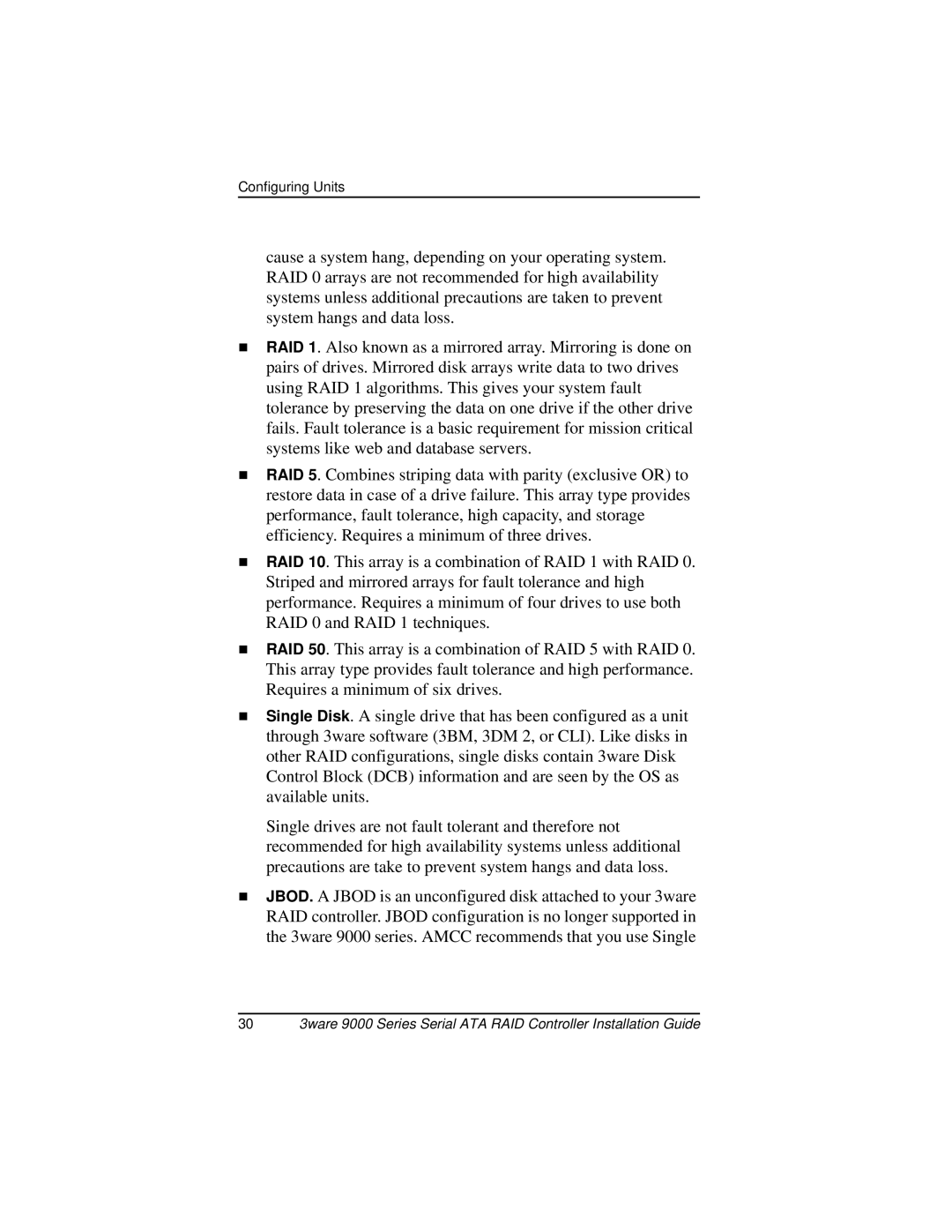
Configuring Units
cause a system hang, depending on your operating system. RAID 0 arrays are not recommended for high availability systems unless additional precautions are taken to prevent system hangs and data loss.
RAID 1. Also known as a mirrored array. Mirroring is done on pairs of drives. Mirrored disk arrays write data to two drives using RAID 1 algorithms. This gives your system fault tolerance by preserving the data on one drive if the other drive fails. Fault tolerance is a basic requirement for mission critical systems like web and database servers.
RAID 5. Combines striping data with parity (exclusive OR) to restore data in case of a drive failure. This array type provides performance, fault tolerance, high capacity, and storage efficiency. Requires a minimum of three drives.
RAID 10. This array is a combination of RAID 1 with RAID 0. Striped and mirrored arrays for fault tolerance and high performance. Requires a minimum of four drives to use both RAID 0 and RAID 1 techniques.
RAID 50. This array is a combination of RAID 5 with RAID 0. This array type provides fault tolerance and high performance. Requires a minimum of six drives.
Single Disk. A single drive that has been configured as a unit through 3ware software (3BM, 3DM 2, or CLI). Like disks in other RAID configurations, single disks contain 3ware Disk Control Block (DCB) information and are seen by the OS as available units.
Single drives are not fault tolerant and therefore not recommended for high availability systems unless additional precautions are take to prevent system hangs and data loss.
JBOD. A JBOD is an unconfigured disk attached to your 3ware RAID controller. JBOD configuration is no longer supported in the 3ware 9000 series. AMCC recommends that you use Single
303ware 9000 Series Serial ATA RAID Controller Installation Guide
